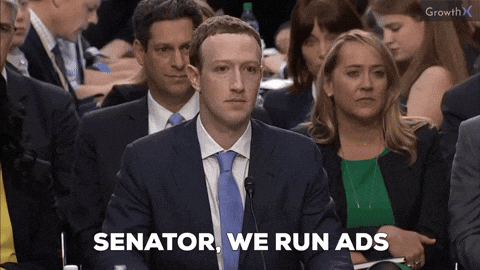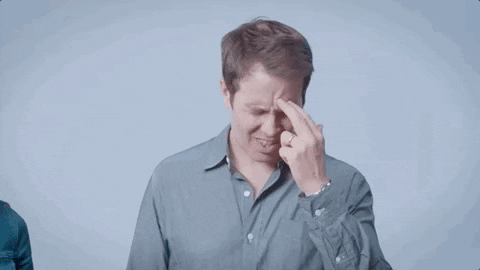60,000 world-class marketers read this newsletter daily
Marketers at Google, Tesla, Meta, Shopify, Amazon, Pinterest, Meta, and other successful companies, read Stacked Marketer to increase their IQ.
Stacked Marketer curates the most useful and important digital marketing news, trends, strategies, and case studies and boils it down to a 7-minute read.
Table of Contents
Curated Careers
Trends and Tidbits:
ROI vs ROAS
OKRs vs KPIs
AI Arena:
Create SWOT Analysis using ChatGPT
AI vs Photography: The time it took to reach 15B pictures
Interesting reads for the week
If this was forwarded to you, consider joining our community through this link.
💼 Curated Careers 💼
💎 Trendy Tidbits 💎
➡️ ROI vs ROAS
What's ROI?
ROI (Return on Investment) is like the Swiss Army knife of financial metrics.
It’s super versatile and used everywhere, in many different forms.
Think of ROI as a way to measure how well your investment is working for you, regardless of what it is. For example — you could be investing in stocks, buying a new piece of machine for your business, or even getting into real estate.
ROI is everywhere. It tells you the percentage of money you’ve made (or lost) compared to what you put in.

Here’s how you figure it out: You take the profit you made, subtract the amount you invested, and then divide that number by the initial investment.
ROI = (return - investment) / investment
Finally, multiply by 100 to get a percentage.
So, if you end up with a 15% ROI → it means you made a 15% profit on top of your original investment.
Here’s an example I would like you to work on and calculate yourself:
Example:
Imagine a company launches a marketing campaign that includes social media, email marketing, and PPC ads. It cost them a total of $100k.
The campaign drives $300k in sales…
but when you factor in all costs (including product costs, overheads, and campaign costs) the net profit from these sales is $120k.
Find ROI. I would like for you to take a moment and give it a try.

Here’s the answer —
ROI = (120,000 / 100,000) × 100 = 120%
What does an ROI of 120% mean?
It tells you that the marketing campaign returned $1.20 for every $1 spent.
And what about ROAS?
Now, ROAS (Return on Ad Spend) — is the go-to metric for the advertising world. It’s all about understanding how effective your advertising campaigns are.

Unlike ROI, which can be applied to just about any investment, ROAS is focused on money spent on advertising, and earned from the same advertisement.
Calculating ROAS: You look at the revenue generated directly from your ad campaign and divide it by the ad spend of that campaign.
If you spend $100 on an ad and it brings in $500 in sales…
Your ROAS is 5:1 OR 5x.
This means for every dollar you spent on ads, you got five dollars back in sales.
Example: Let's say you spent $20k on Google Ads for a specific campaign, which directly resulted in sales of $100k.
What would be the ROAS?

Answer —
ROAS=100,000 / 20,000 = 5x
That’s — Return on Ad Spend.
To conclude what we learned…
ROI gives you a big-picture view of profitability across any and all investments.
vs.
ROAS zeros in on the bang-for-your-buck from advertising.
⬇️⬇️⬇️
Here’s an additional question. Calculate and reply to this email with your answer. Correct answer (with explanation) gets featured in the next edition —
A company launches a marketing campaign for a new product, spending $5,000 on the campaign. The campaign generates $25,000 in sales. The product sold costs the company $10,000 to produce and deliver. Calculate both the ROAS and ROI for this campaign.
In other thoughts…
➡️ OKRs vs KPIs
🤖 AI Arena 🤖
Create SWOT Analysis

Copy and paste the prompt to your ChatGPT to create a SWOT analysis —
Act like a seasoned business strategist with extensive experience in corporate strategy. You have been performing SWOT (Strengths, Weaknesses, Opportunities, Threats) analyses for various industries and companies for over 30 years.
Your task is to develop a comprehensive SWOT analysis for a [enter your product or business brief].
Strengths: Detail the internal attributes and resources that support the startup's ability to achieve its objectives.
Weaknesses: Describe the internal attributes and resources that work against the startup's ability to achieve its objectives. Include aspects like operational inexperience, market entry timing, and product development challenges.
Opportunities: Identify external conditions that the startup could exploit to its advantage. Focus on emerging market trends in the industry, potential strategic partnerships, and technological advancements.
Threats: Consider external challenges that could pose a risk to the success of the startup. Discuss factors such as competition intensity, technological disruptions from other sectors, and potential regulatory changes affecting the industry.
Provide a detailed analysis for each component of SWOT, supported by data and scenarios. Ensure that each element of the SWOT is addressed with depth and strategic insights to guide potential business strategies.
Take a deep breath and work on this problem step-by-step.
AI vs Photography: The time it took to reach 15B pictures
It took 150 years from the first photograph in 1826 to 1975 to reach 15 Billion photographs. On the other hand, more than 15 billion images have already been created using text-to-image AI tools since 2022. Insane, isn’t it?
🧠Interesting reads🧠
🔗 How to Build SEO Strategy with AI → Link
🔗 How AI Will Affect Sales Jobs in 2024 → Link
🔗 The role of artificial intelligence in business in 2024 → Link
🔗 10 Quotes About Artificial Intelligence from the Experts → Link
🔗 How to use AI to make more money and save more time → Link
Did you enjoy this issue?
Thanks,
Deep Kakkad, your marketer friend.






